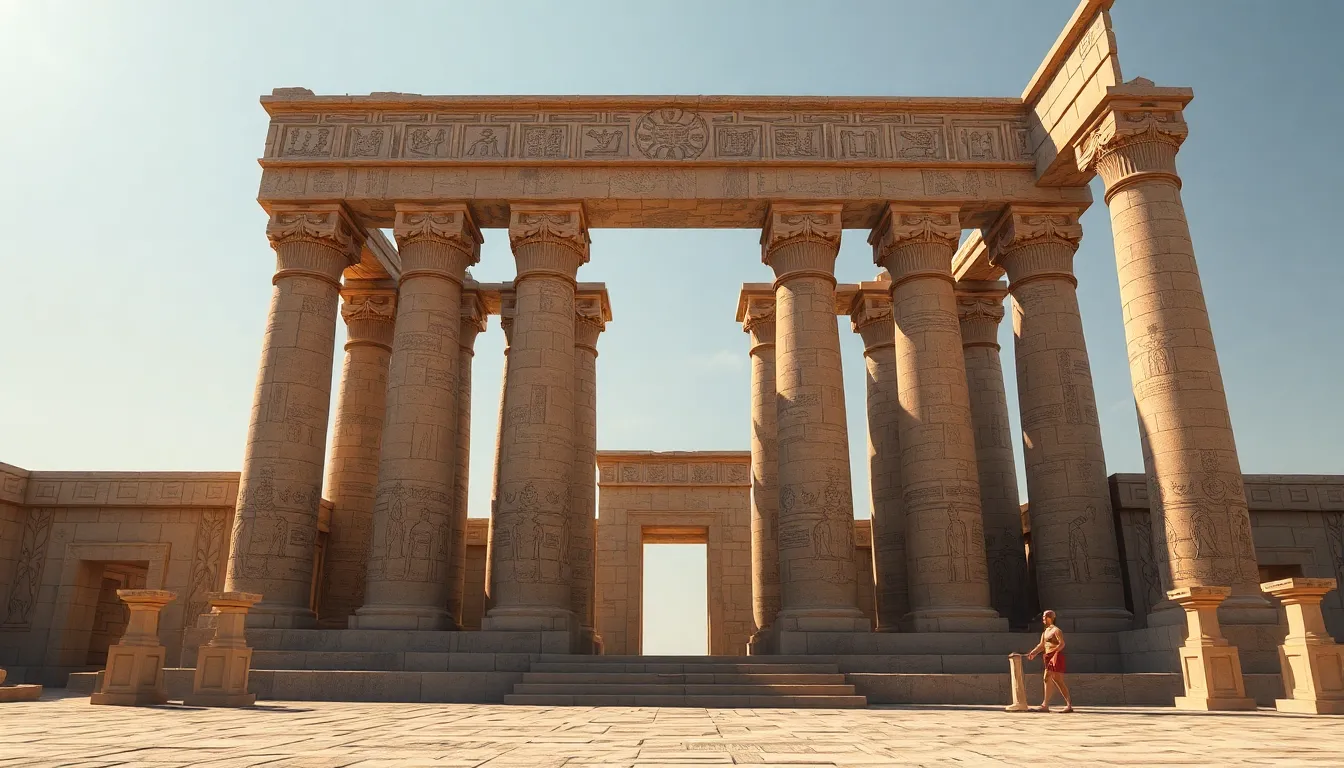The Role of Sacred Architecture in the Afterlife Beliefs of Ancient Egyptians
I. Introduction
Sacred architecture refers to structures built for religious purposes, serving as places for worship, rituals, and burial. In ancient Egypt, this concept encompassed temples, tombs, and pyramids, all of which played vital roles in the beliefs surrounding the afterlife. The ancient Egyptians held a profound belief in the afterlife, viewing it as a continuation of life on earth, where the soul would experience eternal existence. This article aims to explore the intricate relationship between sacred architecture and ancient Egyptian afterlife beliefs, shedding light on how these structures were designed to facilitate the transition from life to the afterlife.
II. Historical Context of Ancient Egyptian Afterlife Beliefs
Ancient Egyptian beliefs regarding the afterlife evolved significantly throughout various dynasties. Initially, the afterlife was seen as a shadowy continuation of life on earth, but over time, it became more elaborate, emphasizing the importance of the judgment of the soul and the promise of eternal life.
Key texts, such as the “Book of the Dead,” provided guidelines for the deceased, including spells and prayers to assist them in navigating the afterlife. Inscriptions found in tombs and temples further illustrate the complex beliefs surrounding death and resurrection.
Religion permeated daily life in ancient Egypt, influencing everything from social structures to burial customs. The construction of elaborate tombs and temples was not merely a reflection of wealth but a deep-seated belief in the necessity of proper preparation for the afterlife.
III. Key Elements of Sacred Architecture
The sacred architecture of ancient Egypt is characterized by three primary elements: temples, tombs, and pyramids.
- Temples: These served as places of worship and connection to the divine, where rituals were performed to honor the gods.
- Tombs: Designed to house the deceased, tombs were filled with items meant to accompany the dead in the afterlife.
- Pyramids: Monumental structures that symbolized the ascent of the soul towards the heavens, serving both as tombs and as symbols of the divine order.
IV. The Role of Temples in Afterlife Beliefs
Temples were considered gateways to the afterlife, where the living could communicate with the divine on behalf of the deceased. Rituals and ceremonies performed within temple structures were believed to ensure that the deceased received the necessary provisions for their journey into the afterlife.
Iconography and inscriptions within temples often depicted scenes of the afterlife, reinforcing the beliefs and practices surrounding death. For instance, depictions of the weighing of the heart, a central myth in Egyptian afterlife belief, were commonly found in temple art.
V. Tomb Architecture and Its Symbolism
Tomb architecture varied significantly between royal and non-royal burials, reflecting social status and the deceased’s expected afterlife journey.
- Royal Tombs: Often grand and elaborate, featuring multiple chambers filled with treasures and offerings.
- Non-Royal Tombs: Simpler structures, yet still designed with careful attention to the needs of the deceased.
Art and hieroglyphs played crucial roles in tomb design, with intricate paintings and inscriptions intended to aid the deceased in the afterlife. The concepts of the “ka” (spirit) and “ba” (soul) were integral to tomb design, ensuring that the deceased could live on in the afterlife.
VI. The Significance of the Pyramid Structure
Pyramids served as monumental tombs for pharaohs and were designed to facilitate their journey into the afterlife. The pyramid shape itself held significant symbolic meaning, representing the rays of the sun and the connection between the earth and the heavens.
Notable pyramids, such as the Great Pyramid of Giza, exemplify the architectural prowess of the ancient Egyptians and their deep-seated beliefs in the afterlife. This pyramid, constructed for Pharaoh Khufu, stands as a testament to the significance placed on burial practices and the desire for eternal life.
VII. Interconnections Between Sacred Architecture and Afterlife Practices
Burial customs in ancient Egypt were closely linked to architectural design, with specific features incorporated to meet the spiritual needs of the deceased. Sacred architecture played a vital role in funerary practices, as the physical structures were believed to provide a safe passage for the soul.
Sacred sites, including temples and tombs, influenced the spiritual journey of the deceased. The rituals conducted at these sites were thought to ensure a favorable outcome in the afterlife, reinforcing the connection between the living and the dead.
VIII. Conclusion
In summary, sacred architecture played a crucial role in shaping ancient Egyptian beliefs about the afterlife. Temples, tombs, and pyramids were not merely structures but profound symbols of the spiritual journey and the eternal existence that awaited the deceased.
The enduring legacy of ancient Egyptian sacred architecture continues to captivate modern minds, offering insights into the beliefs and practices of a civilization deeply concerned with life after death. Understanding these architectural marvels allows us to appreciate the complexities of ancient cultures and their views on mortality and the afterlife.




